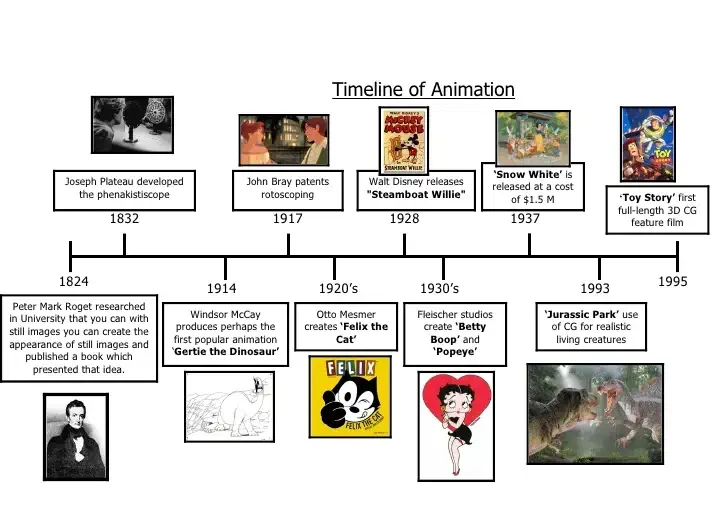Animation was evolved firstly in French by a Cartoonist Emile Cohl, in his two minute stick figure animation, Fantasmagorie (1908). Which became one of the first cartoons. In 1914, Winsor McCay’s Gertie the Dinosaur broke new revolution in the animation industry.
It was the first ever animated films to demonstrate techniques like animation loops, keyframing, inbetweeners. Which made animation industry’s pillar strong for future animation production.
What animation is..?
A process of bringing life to inanimate objects or bringing illustrations through motion pictures is known as animation. Animation includes manipulation of photos and drawings to illustrate movement to present narrated scripts to audience on screens.
Examples of earlier Animation Devices :-
MAGIC LANTERN :-
Magic Lantern was developed in early 1603, it was an image production device. This method is used a light source and a mirror in front of it, light source was used to be mostly a candle. That light source would pass the light through long glass slides that resulted projecting the slide’s Illustrations. This made the Magic Lantern first instance of Moving Pictures by placing the slides together formed movement.
THAUMATROPE :-
Thaumatrope was a optical toy from 19th century that presented a picture disk which was held by two strings. The disk would spin whenever they twirl those two strings which caused moving images on either sides of the disk into one by the optical illusion that makes our eyes see movement long even after the movement has stopped. This optical illusion is called as “Persistence of Vision.”
PHENAKISTOSCOPE :-
Phenakistoscope some of the times is also spelled as “PHENKISTISCOPE” and it is also known as FANTASCOPE. The Phenakistoscope was evolved around early 1833, which presented spinning painted cardboard disks which were reflected in mirrors, that caused the illusion of movement. The Phenakistoscope’s audience was limited to single person at a time.
ZOETROPE :-
Zoetrope was a successor of the Phenakistoscope. this method had a cylinder that featured images in a sequence of motion. Zoetrope’s audience could be multiple person or it can be viewed by more than single person at a time. The cylinder had vertical slits which stated a mechanism for the eye to keep the spinning visuals from blurring or blending together when in motion.
KINEOGRAPH :-
Kineograph is derived from the latin terminology “Moving Pictures.” This method which is also known as the FLIPBOOK made it’s debut in early 1868. It is a small book of drawing or illustrations in which each of the page featured a different form of movement. Which caused animated sequence when the pages were flipped rapidly in sequence.
PRAXINOSCOPE :-
Praxinoscope was a successor of Zoetrope in early 1877, which replaced the vertical slits with an inner circle of angled mirrors.





